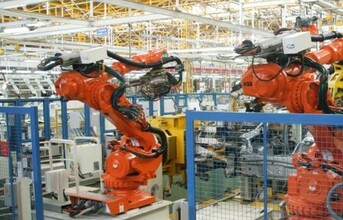
Growth through innovation and collaboration
According to the KPMG's 2014 GMO, almost half of manufacturers plan to double R&D spending in product development over the next 12-24 months. There are also signs that breakthrough innovation is gaining importance as a strategy for 39 percent of industrial manufacturers, up 8 percentage points from KPMG's 2013 GMO, representing a 25 percent increase in companies pursuing such strategies.
"The manufacturing world is in an era of hyper-innovation," said Dobbs. "Ultimately, those organisations that do not balance investment in ‘incremental innovation' with investment in ‘breakthrough innovation' may find themselves left behind competitively."
"Innovation is becoming a key success driver for every organisation worldwide and India will be no different. Innovation is likely to move from the traditional product innovations to other sphere of management such as cost optimisation, feature addition etc. Partnership value program which aims to generate innovative ideas in collaboration with the suppliers and business partners for cost compression and quality enhancement will gather momentum in the coming years", added SV Sukumar, Partner and Head of Operation and Supply Chain, KPMG in India on the subject of ‘Collaboration to innovate in India'.
Manufacturers in Germany appear set to lead in breakthrough innovation with 77 percent citing it as their primary R&D strategy for product development. Among the industrial sectors included in the survey, 50 percent of respondents from the Conglomerates sector say breakthrough innovation will be their primary R&D strategy.
In terms of business models, 88 percent of respondents say partnerships over in-house efforts will shape manufacturers' approach to innovation, up significantly from 51 percent in KPMG's 2013 GMO. Additionally, 68 percent say they are adopting more collaborative business models with suppliers and customers. In EMEA, respondents were overwhelmingly in strong agreement with adopting more collaborative models (82 percent).
Improving supply chain visibility
This year's GMO reveals that limited visibility across the supply chain remains a growing concern for manufacturers, even though many have made notable progress towards improving transparency.
|
Reviving manufacturing in India Resolving issues around Coal and mining sector as quickly as possible as this is not only affecting this sector but it has a cascading effect on other sectors and the whole economy. The short term, medium term and long term focus should be on improving Road, rail and port infrastructure as the industry is suffering from bottleneck in these areas for both domestic and overseas movements. Boosting Small and medium enterprises (SME) segment in manufacturing sector should assume greater priority as they are under severe stress for the past few years, and more so as they employ large number of people. Recommended by SV Sukumar, Partner and Head of Operation and Supply Chain, KPMG in India |


























